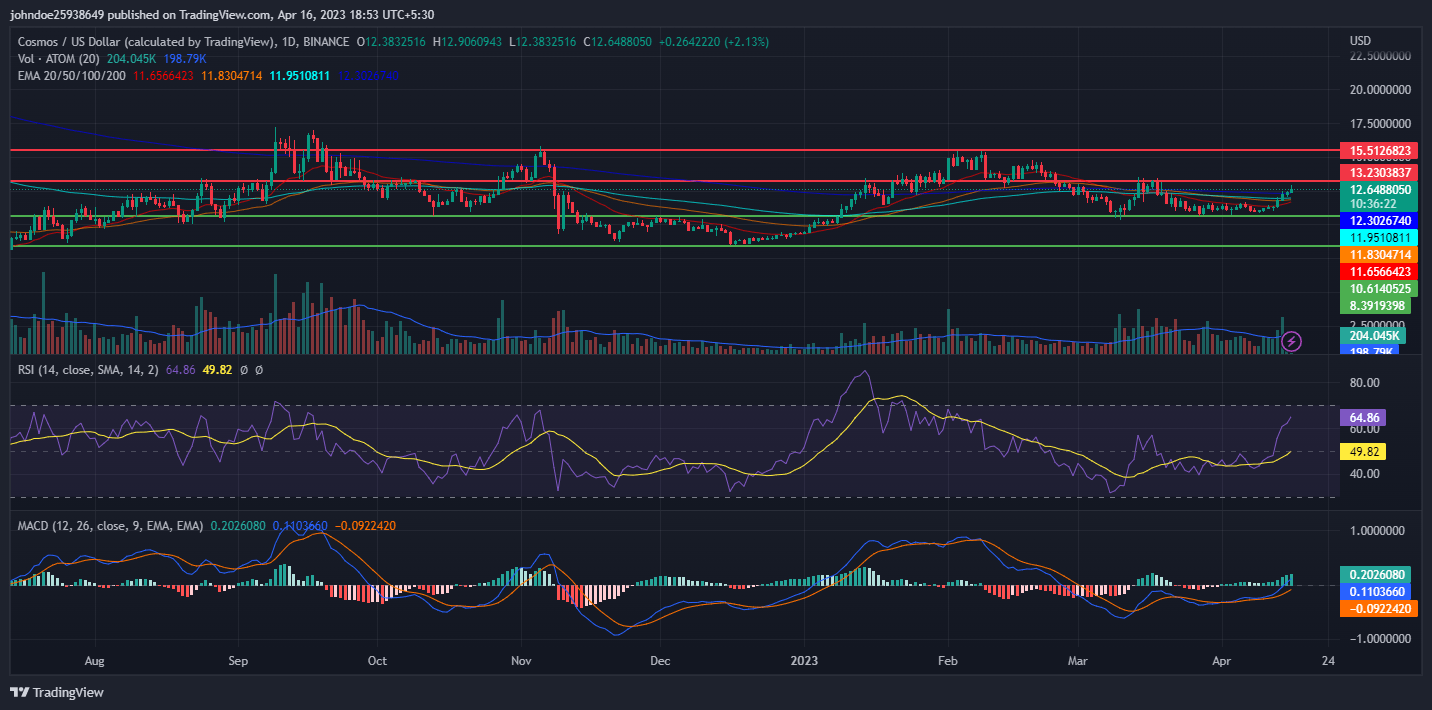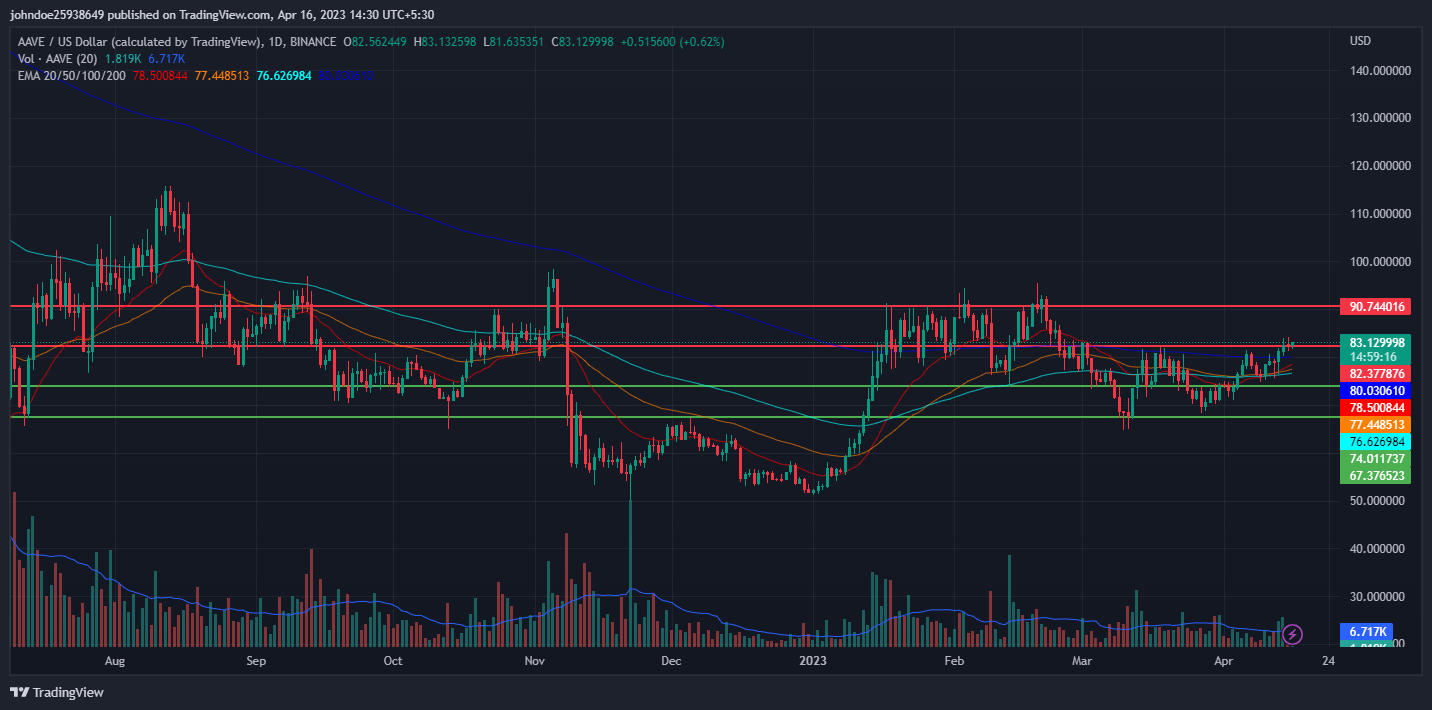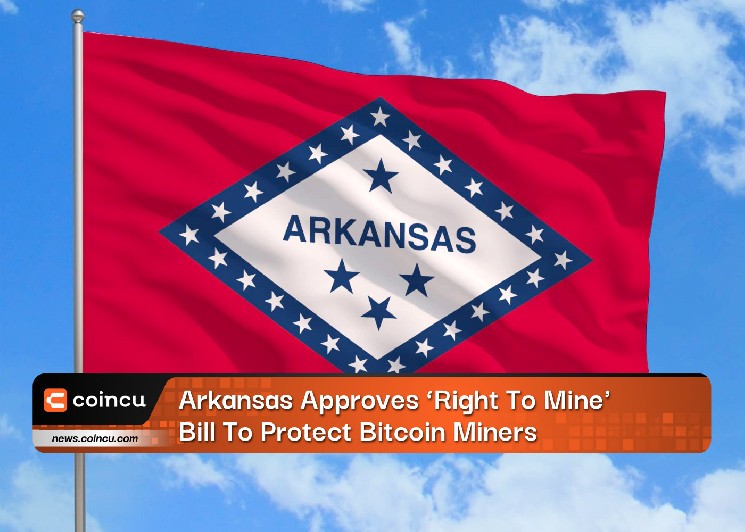XEN token induces a 10-month ETH gas price high

In the past 24 hours, the XEN token has generated a great deal of buzz in the crypto community. The return of some volatile meme coins caused Ethereum (ETH) gas fees to increase by a staggering 73%. In the past week, Ethereum gas fees surpassed their 10-month high.
Some meme-based cryptocurrencies captured the crypto community’s attention the past week. According to a software engineer on Twitter with the handle @Cygaar, the recent increase in gas fees on the Ethereum network is largely attributable to the XEN token. He noted that the token utilized up to 90% of the gas per block for single transactions.

Source: Twitter
Contents hide
1 XEN token accounts for more than 15% of ETHs gas fees
2 What’s the solution moving forward?
3 How can EIP-4844 benefit users?
4 Ethereum price drops
XEN token accounts for more than 15% of ETHs gas fees
XEN coin is an ERC-20 currency that was introduced in October 2022 and accounts for around 15% of all Ethereum gas expenses. XEN gas expenditure began to raise concerns near the end of 2022. XEN token gas was four times that of all Layer-2 networks in December 2022 and 20% greater than that of OpenSea, the largest NFT marketplace.
Interestingly, the first time ETH supply turned deflationary was in October, when the XEN token was launched. While XEN has contributed to the gas price surge, other factors have played a part in the ongoing price circus. Memecoins have taken the lead.
These extremely volatile assets were primarily transacted on the Arbitrium [ARB] network in exchange for ETH. Due to increased network resource consumption, IntoTheBlock data indicates that Ethereum earned $66.7 million in gas fees during this period.
Ethereum fees rose a whopping 73% this week, with meme coin speculation driving gas costs.#ETH #PEPEpic.twitter.com/5U6xBMVFur
— IntoTheBlock (@intotheblock) April 22, 2023
It is important to note that the increase in Ethereum network traffic could lead to congestion and higher transaction validation fees. Even though memecoins are viewed as high-risk investments prone to sudden price increases and decreases, many have recently demonstrated remarkable performance.
Although the momentum slowed, the increase suggests that a substantial quantity of ETH was used in transactions during the previous week. However, the average quantity of gas used has also decreased significantly.
The average quantity of gas consumed for transaction validation has decreased to 43.99 Gwei, according to data from Santiment. This demonstrates the traders’ reluctance to exchange ETH for other cryptocurrencies.

Source: Glassnode
Moreover, Glassnode announced on April 23 that the average gas price for Ethereum had attained a 10-month high. During periods of increased demand for cryptocurrencies, ETH gas prices have risen on multiple occasions in the past. Consequently, the cost for the average user rises to prevent network congestion.
What’s the solution moving forward?
Cygaar subsequently emphasized the significance of EIP-4844 and Layer 2 protocols for scaling Ethereum. According to him, such implementations would prevent instances in which a single program is responsible for driving up gas costs for all other network users.
Curious why your ETH txns have been so expensive in the last 24 hrs? This XEN token has been consuming up to 90% of gas per block in single txns.
This is why EIP4844 + L2s will be important for scaling ETH – we can’t keep having single apps spike gas for everyone else. pic.twitter.com/6O36ulHRay
— cygaar (@0xCygaar) April 24, 2023
In addition, Cygaar cited a report describing the EIP-4844 upgrade as a viable solution for reducing gas fees on the Ethereum network. According to the report, the upgrade will include data availability rollups that reduce transaction fees and increase transaction throughputs. This would herald a new era of low-cost on-chain activity.
What is EIP-4844: EIP-4844 has been proposed as a stopgap measure to address the issue of Ethereum’s excessive gas fees. The EIP 4844 proposal aims to establish a “stop-gap” solution to alleviate the network of the ever-growing number of transactions by adding approximately 2 MB of space to the blocks.
This version attempts only to introduce the format that will be used for sharded data without sharding the data itself. The proposal was scheduled to go into effect after the Shanghai upgrade.
How can EIP-4844 benefit users?
EIP-4844, also known as proto-danksharding, is a proposed Ethereum protocol enhancement that aims to reduce transaction fees and boost transaction throughput. It plans to accomplish these goals by introducing a new transaction type that admits “blobs” of data.
EIP-4844 is proposed as a transitional solution because deploying data sharding is a lengthy and complex process. As a result, it will prepare Ethereum for full danksharding, which will reach approximately 100,000 transactions per second (TPS) without compromising decentralization or security.
EIP-4844 is anticipated to be implemented in the second half of 2023, but delays are possible. Ben Edgington, an Ethereum contributor, summarizes EIP-4844 with the memorable alliterative phrase, “EIP-4844 bolts blobs onto blocks.” It describes concisely how blob-carrying transactions include “blobs” attached to blocks, thereby increasing the amount of data that blob-carrying blocks can manage.
This may be confusing because it appears to be equivalent to expanding block sizes, which contradicts Ethereum’s stance against arbitrarily huge blocks, which would necessitate more computational power and might thus lead to centralization. However, there are some important distinctions between blockspace and blobspace.

Users will see considerable improvements following the introduction of EIP-4844, mostly in the form of faster transactions and lower fees. The successful implementation of EIP-4844 will help strengthen Ethereum’s position in the cryptocurrency market.
Ethereum price drops
In the meantime, the recent volatility in the price of Ethereum indicates an ongoing adverse market trend. Due to an increase in bearish sentiment, the ETH/USD pair has declined significantly over the past week, reaching $1,850. The coin is presently trading in a bearish zone and will likely experience additional short-term pressure.
The selling pressure intensified as soon as the ETH/USD pair dropped below the psychological $1,880 barrier. This level initially provided solid support, but buyers were unable to maintain it, and the price fell below $1,850.
At $1,842, analysts observe tremendous support for the ETH/USD pair. If this level fails to hold, the coin is expected to continue falling and attempt its next support at $1,800.Technical analysts believe that there is immediate resistance near the $1,900 region.






 Bitcoin
Bitcoin  Ethereum
Ethereum  Tether
Tether  USDC
USDC  TRON
TRON  Dogecoin
Dogecoin  Cardano
Cardano  Bitcoin Cash
Bitcoin Cash  Monero
Monero  Chainlink
Chainlink  LEO Token
LEO Token  Zcash
Zcash  Stellar
Stellar  Litecoin
Litecoin  Hedera
Hedera  Dai
Dai  Cronos
Cronos  Tether Gold
Tether Gold  OKB
OKB  Ethereum Classic
Ethereum Classic  KuCoin
KuCoin  Gate
Gate  Algorand
Algorand  Cosmos Hub
Cosmos Hub  VeChain
VeChain  Dash
Dash  TrueUSD
TrueUSD  Tezos
Tezos  Stacks
Stacks  IOTA
IOTA  Basic Attention
Basic Attention  Theta Network
Theta Network  Decred
Decred  NEO
NEO  Synthetix
Synthetix  Qtum
Qtum  Ravencoin
Ravencoin  DigiByte
DigiByte  0x Protocol
0x Protocol  Nano
Nano  Zilliqa
Zilliqa  Siacoin
Siacoin  Numeraire
Numeraire  Waves
Waves  BUSD
BUSD  Enjin Coin
Enjin Coin  Status
Status  Pax Dollar
Pax Dollar  Ontology
Ontology  Hive
Hive  Lisk
Lisk  Steem
Steem  Huobi
Huobi  OMG Network
OMG Network  NEM
NEM  Bitcoin Gold
Bitcoin Gold  Augur
Augur  Ren
Ren  HUSD
HUSD